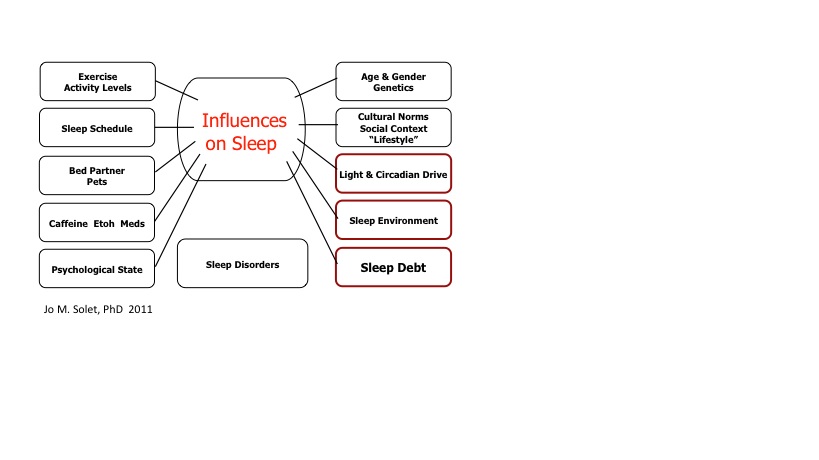- Details
- Last Updated: 02 March 2016 02 March 2016
Article Index
Sleeping patterns and sleeping conditions
Factors that influence sleep
Dr. Solet explained each of the following, and how it can play a role in sleep issues.
One of her examples was a college student living in a dormitory and how, if she is a morning person, she may have a problem if late night noise in the dorm doesn’t allow her to get to sleep. Some sleep influencing factors cannot be modified such as age, gender and genetics; others can.
Consistency in sleep schedule is helpful; the body actually needs that. The body used to be in sync with nature such that when the sun went down, you went to sleep. With today’s 24/7 cycle, there are no clear lines and a person has to create her own.
It is better to go to bed about the same time each night rather than a different time every night. Social jet lag is the term used to explain Monday morning fatigue for individuals who stay up late on the weekend and drag into work on Monday.
If you are sleeping with a bed partner who disrupts your sleep, or is on a different schedule, it may be better to sleep alone and have visits.
Pets should be trained not to disturb your sleep. It is better to have a pet sleep on the floor and not the bed with you. Many pet owners don’t even think about putting their pets out of their bedroom.
Many substances have effects on sleep. Caffeine is alerting and is sometimes used in combination with a short nap.
Doctors will use this technique where they drink a strong cup of coffee and take a twenty-minute nap. When they get up, the caffeine has taken hold and it acts as a stimulant alone with the rejuvenation from the nap. Caffeine can and does affect sleep and it is not a good idea to drink it especially after noon, except for emergencies.
The majority of CFS and FM patients may have alcohol intolerance and do not drink. Alcohol can initially be a sedative, but it decreases sleep duration and efficiency, suppresses REM, and increases WASO, especially in women.
Benadryl, an over-the-counter antihistamine, is sometimes used as a sedative because it can cause drowsiness, but it inhibits SWS and REM sleep, leading to non- restorative sleep, lasting sleep inertia, rapid tolerance, and rebound insomnia.
Some influences on sleep are under our control, but others are not. The following is a bullet list for a quick check:
• Exercise and activity levels
• Sleep schedule
• Bed partner and pets
• Caffeine, alcohol and medications
• Psychological state
• Sleep disorders
• Age/gender, genetics
• Cultural norms/lifestyle
• Light and circadian drive
• Sleep environment
• Sleep debt
• Sleep disorders
Influences on sleep chart

